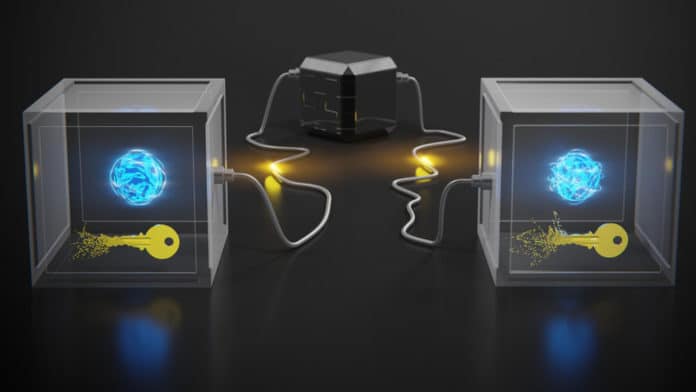Remarkably, quantum key distribution protocols such as the Bennett–Brassard scheme provide information-theoretic security. However, quantum protocols realized so far are subject to a new class of attacks exploiting a mismatch between the quantum states or measurements implemented and their theoretical modeling, as demonstrated in numerous experiments.
For the first time, an international team of scientists, including researchers from EPFL, has demonstrated an approach experimentally to quantum key distribution based on high-quality quantum entanglement — offering much broader security guarantees than previous schemes.
Professor Rüdiger Ubanke, Dean of the IC School who, together with Ph.D. student Kirill Ivanov, is one of the paper’s authors, said, “Over the years, it has been realized that QKD schemes can have a remarkable benefit: users have to make only very general assumptions regarding the devices employed in the process. The newest form of QKD is now generally known as ‘device-independent QKD.’ An experimental implementation of this became a major goal in the field. That’s why it is exciting that such a breakthrough experiment has finally been achieved.”
Two single ions were used in the experiment—one for the sender and one for the receiver—and were held in separate traps linked together by an optical fiber. Entanglement between the ions were produced in this fundamental quantum network with record-high fidelity over millions of runs.
The protocol could not have been carried out in a practically helpful manner without such a consistent source of high-quality entanglement. Verifying that the entanglement was properly exploited was equally crucial. Significant breakthroughs, in theory, were required for the data processing, the effective extraction of the cryptographic key, and ensuring optimal performance throughout the experiment.
In the experiment, the ‘legitimate parties’ — the ions — were located in one and the same laboratory. But there is a clear route to extending their distance to kilometers. With that perspective and further recent progress in related experiments in Germany and China, there is now a real prospect of turning theoretical into practical technology.
Journal Reference:
- Nadlinger DP et al. Experimental quantum key distribution certified by Bell’s theorem. Nature, published online 27 July 2022, DOI: 10.1038/s41586-022-04941-5
